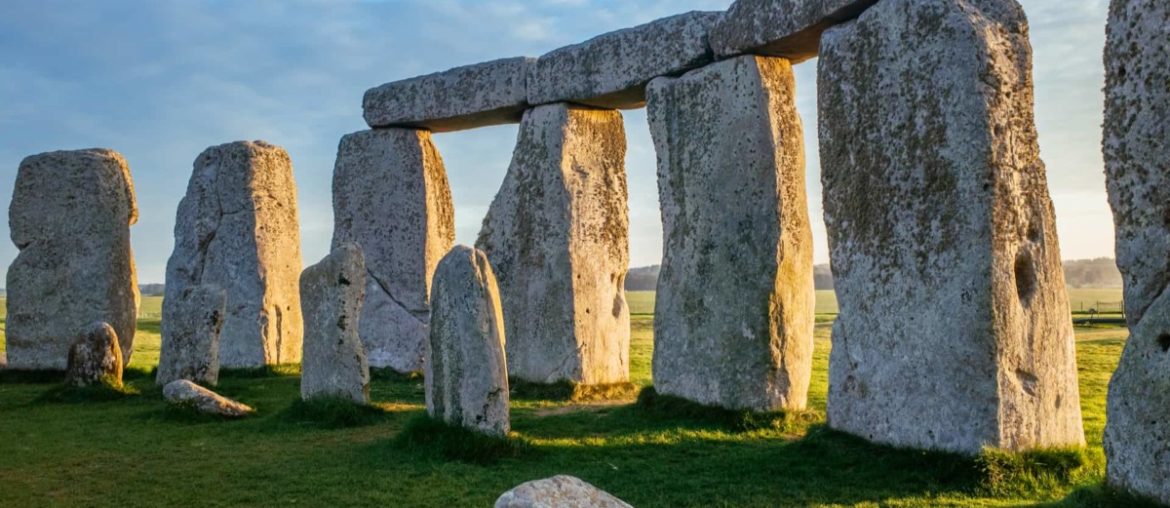Stonehenge is one of the most iconic sites in the UK, if not in the world. You might already know this Neolithic monument is over 5,000 years old. You might also know that many stones were dragged to the site all the way from South Wales, especially if you joined one of our Stonehenge tours already.
But did you know the site was inhabited long before the stones were erected, or that ancient axe carvings were only discovered within the last decade?
What are some essential facts about Stonehenge?
- The average stone at Stonehenge weighs 25 tons
- Stonehenge has a longer history than you might expect
- We still don’t know everything about Stonehenge
- Stonehenge might have been a burial ground
- Stonehenge attracts over a million visitors per year
Learn more below!
The average stone at Stonehenge weighs 25 tons
It’s true that photos of Stonehenge don’t do it justice. Get up close and personal with this UNESCO World Heritage Site, and you’ll be blown away by the sheer size of the stones. The average vertical pillar weighs 25 tonnes, and the heaviest stone – the Heel Stone – weighs about 30 tonnes.
You can get an idea of just how heavy these stones are by heading to the visitor centre, where you can attempt to move a replica stone with a group – and driving one of these hefty rocks certainly requires a group effort.
Stonehenge has a longer history than you might expect
Stonehenge was constructed around 2500 BCE, which makes it around 5,000 years old. However, the site of Stonehenge was inhabited long before the first stones turned up. Researchers used radiocarbon dating to determine the age of a skeleton buried at the site. According to the results, the site where Stonehenge now lies was inhabited at least 500 years before the enclosure was built.
You can see the reconstructed head of the skeleton found at Stonehenge in the visitor centre. It may be a reconstruction, but it’s a highly realistic impression of what the real man looked like.
We still don’t know everything about Stonehenge
Some mysteries surrounding Stonehenge will likely remain mysteries forever. We have a rough idea of when and how it was built, though some people contest that the stones were transported to the site from South Wales by oxen rather than people. But we’re discovering more and more on an almost constant basis.
For example, before 2011, it was assumed that there were 44 axe-head carvings on the stones. Thanks to 3D laser scanners, we now know there are around 115 carvings, most of which are invisible to the naked eye. Some of the carvings were added to the stones 700 years after Stonehenge was built.
Stonehenge might have been a burial ground
While nobody truly knows the primary purpose of Stonehenge, it’s likely that it at least started out as a burial ground. The cremated remains of around 50,000 bones were excavated at the site in 2013. These bones belonged to 63 men, women and children, mostly dating back to between 3000 BCE and 2500 BCE.
Stonehenge attracts over a million visitors per year
Given its long history and mysterious background, it’s no wonder that Stonehenge is an extremely popular tourist attraction. It was first opened to the public in the 20th century, when visitors could walk around and climb on stones. Due to erosion and the protected status of the site, visitors have only been able to view the stones from a distance since 1997. But trust us – the view alone makes Stonehenge well worth a visit.
Are you interested in learning more about the stories, legends and mysteries that make Stonehenge one of the world’s most famous prehistoric monuments? Discover our Stonehenge tours, which include inner-circle access experiences and a Stonehenge and Bath tour.






